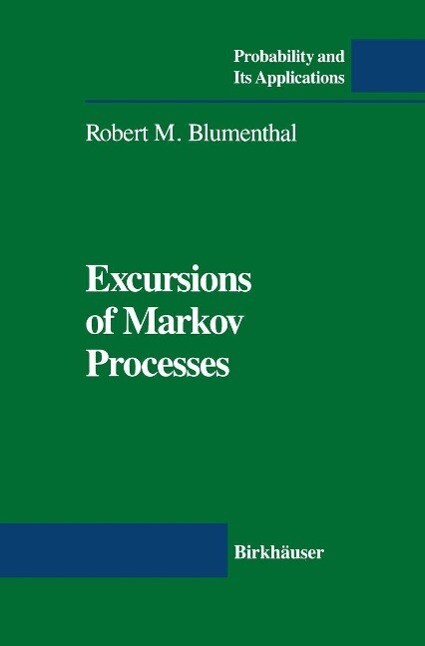Let {Xti t ~ O} be a Markov process in Rl, and break up the path X t into (random) component pieces consisting of the zero set ({ tlX = O}) and t the "excursions away from 0," that is pieces of path X. : T ::5 s ::5 t, with Xr- = X = 0, but X. 1= 0 for T < s < t. When one measures the time in t the zero set appropriately (in terms of the local time) the excursions acquire a measure theoretic structure practically identical to that of processes with stationary independent increments, except the values of the process are paths rather than real numbers. And there is a measure on path space that helps describe the measure theoretic properties of the excursions in the same way that the Levy measure describes the jumps of a process with independent increments. The entire circle of ideas is called excursion theory. There are many attractive things about the subject: it is an area where one can use to advantage general probabilistic potential theory to make quite specific calculations, it provides a natural setting for apply ing esoteric things like David Williams' path decomposition, it provides a method for constructing processes whose description in terms of an in finitesimal generator or some such analytic object would be complicated. And the ideas seem to be closely related to a good deal of current research in probability.
Inhaltsverzeichnis
I Markov Processes. - 0. Introduction. - 1. Basic terminology. - 2. Stationary transition functions. - 3. Time homogeneous Markov processes. - 4. The strong Markov property. - 5. Hitting times. - 6. Standard processes. - 7. Killed and stopped processes. - 8. Canonical realizations. - 9. Potential operators and resolvents. - II Examples. - 1. Examples. - 2. Brownian motion. - 3. Feller Brownian motions and related examples. - III Point Processes of Excursions. - 1. Additive processes. - 2. Poisson point processes. - 3. Poisson point processes of excursions. - IV Brownian Excursion. - 1. Brownian excursion. - 2. Path decomposition. - 3. The non-recurrent case. - 4. Feller Brownian motions. - 5. Reflecting Brownian motion. - V Itô s Synthesis Theorem. - 1. Introduction. - 2. Construction. - 3. Examples and complements. - 4. Existence and uniqueness. - 5. A counter-example. - 6. Integral representation. - VI Excursions and Local Time. - 1. Introduction. - 2. Ray s local time theorem. - 3. Trotter s theorem. - 4. Super Brownian motion. - VII Excursions Away From a Set. - 1. Introduction. - 2. Additive functionals and Lévy systems. - 3. Exit systems. - 4. Motoo Theory. - Notation Index.










